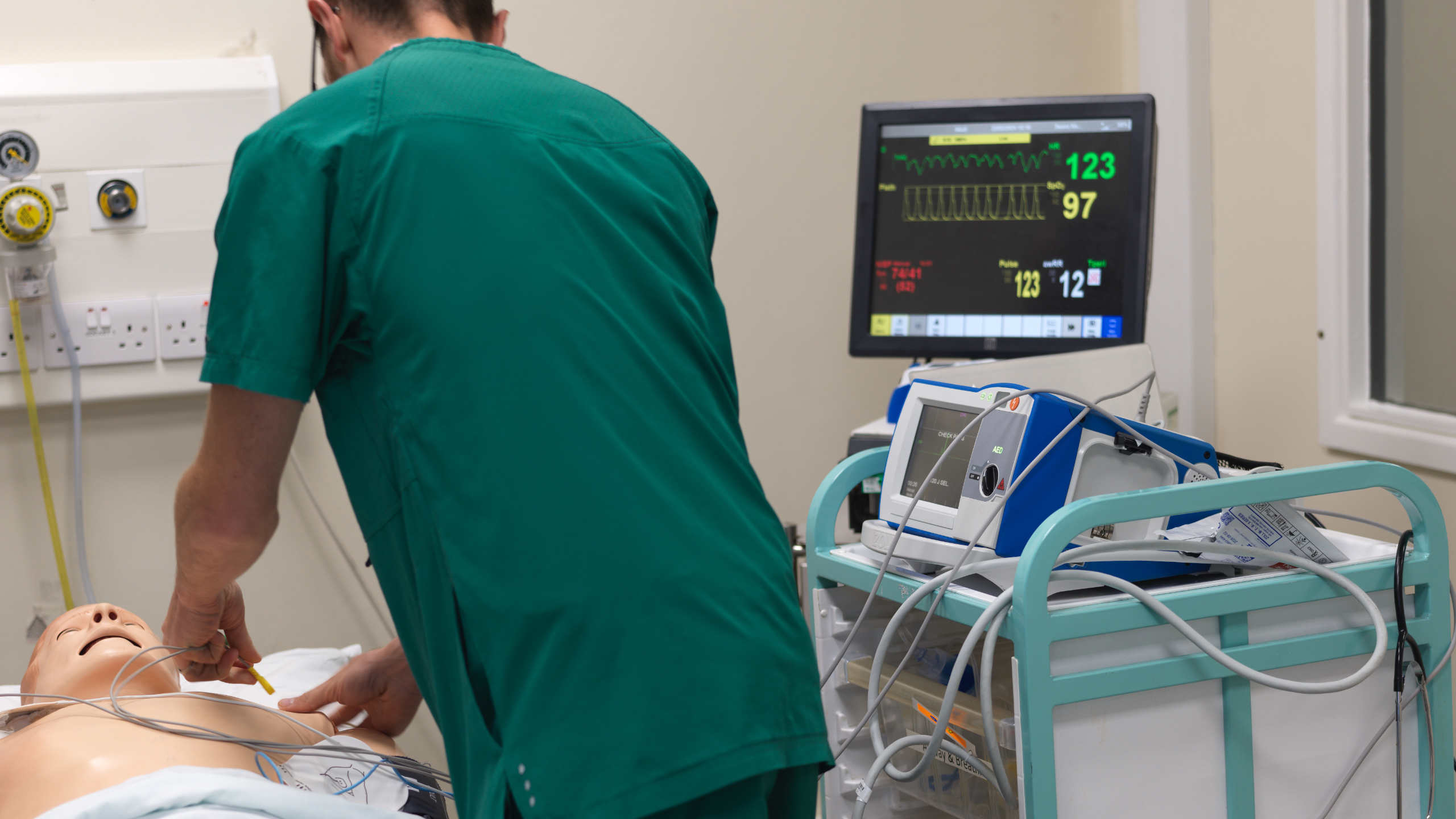
DC Pacing
Acute Care Common Stem (ACCS)Use this resource in conjunction with your real-world training

Experience Summary
In this 360-degree video, observe the procedure for performing DC pacing on a patient with complete heart block who has not responded to atropine.
Clinical Context
Direct current (DC) pacing, more accurately referred to as transcutaneous pacing (TCP), is a non-invasive emergency procedure used to deliver electrical impulses to stimulate myocardial contractions in patients with bradyarrhythmias or asystole. It is a temporising measure employed when there is symptomatic bradycardia, particularly when associated with hemodynamic instability (e.g., hypotension, altered mental status, syncope), and no immediate access to transvenous pacing or definitive therapy.
Common indications include:
- Symptomatic sinus bradycardia unresponsive to pharmacologic therapy (e.g., atropine).
- High-grade atrioventricular (AV) block.
- Complete heart block with inadequate escape rhythm.
- Asystole or severe bradycardia during cardiac arrest, as part of Advanced Life Support (ALS) protocols.
DC pacing provides an immediate, albeit uncomfortable, method of supporting cardiac output until a more definitive intervention—such as transvenous pacing or permanent pacemaker implantation—can be arranged.
Steps of Performing DC Pacing:
- Assessment and Indication:
- Identify clinical signs of instability (e.g., hypotension, chest pain, confusion) with ECG evidence of significant bradyarrhythmia.
- Determine that pharmacologic measures are inadequate or contraindicated.
- Equipment Preparation:
- Use a defibrillator capable of delivering transcutaneous pacing.
- Apply self-adhesive pacing/defibrillation pads in either the anteroposterior or anterolateral position.
- Connect the pads to the pacing device.
- Patient Preparation and Sedation:
- Explain the procedure if the patient is conscious; pacing can be painful.
- Administer analgesia and/or sedation (e.g., fentanyl, midazolam) as needed for patient comfort and tolerance.
- Initiation of Pacing:
- Set the defibrillator to the "pacing" mode.
- Select an initial pacing rate, typically around 60–80 beats per minute.
- Gradually increase the output (mA) until electrical capture is observed on ECG (wide QRS complexes) and mechanical capture is confirmed via pulse palpation or pulse oximetry.
- Monitoring and Adjustments:
- Confirm continuous capture and adjust output to a level just above the capture threshold (usually 2–3 mA higher).
- Monitor vital signs and patient comfort closely.
- Ongoing Care:
- Transcutaneous pacing is temporary; arrange for urgent transvenous pacing or definitive intervention.
- Continue monitoring for arrhythmia resolution or recurrence.
DC pacing is a critical lifesaving measure, rapidly deployable in emergency settings to stabilise patients with severe bradycardia until more permanent pacing options are available.
Learning Outcomes
- Observe the procedure of performing DC pacing in a patient with complete heart block.
- Understand how to use the defibrillator for DC pacing.
- Understand the indications for DC pacing in adult bradycardia.
External Resources
